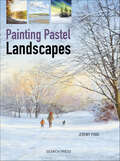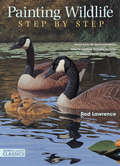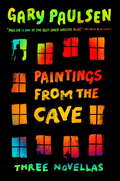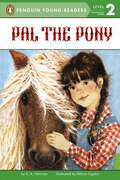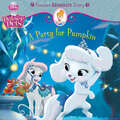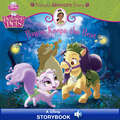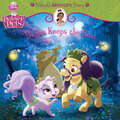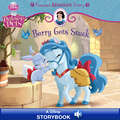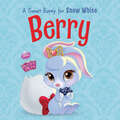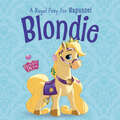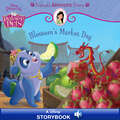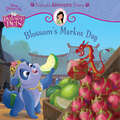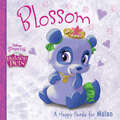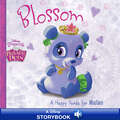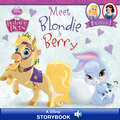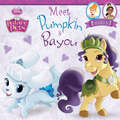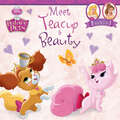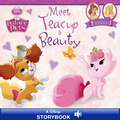- Table View
- List View
Painting Flowers in Watercolour (30 Minute Artist)
by Fiona PeartGot a half hour? Use it to paint something beautiful with these ten quick projects.The 30 Minute Artist series is for beginners and busy artists who want to achieve great paintings in just half an hour. Here, expert artist and teacher Fiona Peart helps you build skills and confidence, and loosen up your style, by producing spontaneous, lively flower paintings in thirty minutes flat. Discover quick exercises to get you started—and then try the ten fantastic step-by-step projects, from a jug of daffodils to sunflowers to spring violas—for a delightful creative break in your day.
Painting Pastel Landscapes
by Jeremy FordWritten by pastel expert and former S.A.A President Jeremy Ford, this gorgeous book is packed full of chalk pastel techniques and inspiring step-by-step projects. It starts with the basics, such as mark-making and blending, through using colour and tone and creating skyscapes, to more advanced techniques including successfully creating depth and perspective. The book builds in difficulty, interspersing the tips and techniques with five beautiful step-by-step projects, allowing the reader to either dip in and out of the book for inspiration, or to follow the book as a course to build up their skills. A wide range of Jeremy’s inspiring work is shown throughout the book to inspire and encourage the reader.
Painting Squirrel's House (Fountas & Pinnell Classroom, Guided Reading)
by Deborah Underwood Mike SpoorNIMAC-sourced textbook. A Paint Plan. Squirrel wants to fix up his old house because his pen pal is coming to visit. Clever Crow has a big plan to paint the whole house very quickly. What could go wrong?
Painting Watercolor Botanicals: 34 Projects For Flowers, Foliage And More
by Harriet de WintonLearn to create your own beautiful watercolor botanical art with more than 30 projects, as well as information on materials and basic techniques. The graceful, contemporary style of these flowers and foliage is attractive and accessible to all no matter your skill level.
Painting Wildlife Step by Step: Learn from 50 demonstrations how to capture realistic textures in watercolor, oi l and acrylic
by Rod LawrenceEasy-to-follow, step-by-step demonstrations in acrylic, watercolor and oil Inside, you'll learn how to create realistic wildlife paintings, step by step, mastering dozens of specific wildlife textures, including: Fur of a bobcat, American bison, snow leopard cub and wolf Feathers of a wood duck, white-throated sparrow and northern shoveler Scales of a trout and sunfish Ears of a cottontail rabbit, white-tailed deer and red fox Bills and Muzzles of a northern cardinal, mallard, great blue heron and mountain lion Tails and Feet of a red squirrel, ruffled grouse and blue jay Antlers and Horns of a deer, moose, bighorn sheep and pronghorn White and Black Subjects such as a polar bear, tundra swan and Canada goose Through, you'll benefit from Rod Lawrence's years of wildlife painting experience. He'll help you notice, for example, the way hair and feature textures change on different parts of an animal's body through the seasons - and even according to the age of the animal. Use this heightened awareness, along with the easy-to-follow, step-by-step demonstrations inside, to create more realistic, more sensitive wildlife paintings.
Paintings from the Cave
by Gary PaulsenMeet Jake who lives in a neighborhood controlled by street violence and fear. He meets a sculptor across the street, and his eyes are opened to another world. Or Jojo,who's closer to her three dogs than to her foster family. When Jojo tries to help another girl who needs a friend, the dogs know what to do. Or Jamie, Erik, and Grandpa, who make up an unusual family.From the Hardcover edition.
Pajarito y el baño para aves (¡Arriba la Lectura!, Level C #57)
by Eve Browne Melissa WebbUn pajarito ve un baño para aves que cuelga de un árbol. Un pájaro grande también ve el baño para aves. Al final, ¿quién estará más contento? NIMAC-sourced textbook
Pal the Pony (Penguin Young Readers, Level 2)
by Ronnie Ann HermanLevel 2. Pal the Pony is the smallest pony at the rodeo! He's upset because he can't do what the big horses can do. But he discovers there is one thing he's better at than anyone else on the ranch.
Palace Pets: A Party for Pumpkin: A Princess Adventure Story
by Disney PressRead along with Disney! One day while Pumpkin, Cinderella's puppy, was prancing and pirouetting around the garden, she ran into Gus, Jaq, and Bibbidy. They were decorating the garden for a party! Pumpkin wanted to help but Jaq was worried...he wanted everything to go perfectly. Follow along with word-for-word narration to find out if Pumpkin and her friends can plan the perfect party before Cinderella and the other guests arrive!
Palace Pets: A Party for Pumpkin: A Princess Adventure Story
by Disney PressRead along with Disney! One day while Pumpkin, Cinderella's puppy, was prancing and pirouetting around the garden, she ran into Gus, Jaq, and Bibbidy. They were decorating the garden for a party! Pumpkin wanted to help but Jaq was worried...he wanted everything to go perfectly. Follow along with word-for-word narration to find out if Pumpkin and her friends can plan the perfect party before Cinderella and the other guests arrive!
Palace Pets: Bayou Keeps the Beat: A Princess Adventure Story
by Disney PressRead along with Disney! Bayou, Tiana's pony, was so excited to see Prince Naveen and Louis perform. But when Bayou got to Tiana's restaurant, Lily told her that Louis was late! Together, the pets leave to invesitage. Follow along with word-for-word narration to see if Bayou and Lily can find Louis before the show begins!
Palace Pets: Bayou Keeps the Beat: A Princess Adventure Story
by Disney PressRead along with Disney! Bayou, Tiana's pony, was so excited to see Prince Naveen and Louis perform. But when Bayou got to Tiana's restaurant, Lily told her that Louis was late! Together, the pets leave to invesitage. Follow along with word-for-word narration to see if Bayou and Lily can find Louis before the show begins!
Palace Pets: Beauty, a Sleepy Kitty for Aurora
by Disney PressEnter the enchanted world of Disney Princess Palace Pets! Disney Princesses have always loved animals. Now, just like the princesses, you can play, nurture, style, and love all of their pets! In this book, meet Beauty, the sleepy kitten, and learn how she and Aurora were looking for a place to nap...and found each other.
Palace Pets: Berry Gets Stuck: A Princess Adventure Story
by Disney PressRead along with Disney! One day, after munching on some blueberries, Berry made her way toward the well to find some water. But once she got there, she heard footsteps coming from the forest and decided to hide in the bucket. Berry got stuck and couldn't get out! Follow along with word-for-word narration to find out who rescues Snow White's bunny.
Palace Pets: Berry: A Sweet Bunny for Snow White
by Disney PressEnter the enchanted world of Disney Princess Palace Pets! Disney Princesses have always loved animals. Now, just like the princesses, you can play, nurture, style, and love all of their pets! In this book, meet Berry, a shy bunny whose love of food leads her to her new best friend: Snow White!
Palace Pets: Blondie: A Regal Pony for Rapunzel
by Disney PressEnter the enchanted world of Disney Princess Palace Pets! Disney Princesses have always loved animals. Now, just like the princesses, you can play, nurture, style, and love all of their pets! In this book, meet Blondie, a little pony with big dreams of meeting Rapunzel and becoming a royal horse.
Palace Pets: Blossom's Market Day: A Princess Adventure Story
by Disney Book GroupRead along with Disney!
Palace Pets: Blossom's Market Day: A Princess Adventure Story
by Disney Book GroupRead along with Disney! Welcome to Whisker Haven, home to all of your favorite Palace Pets.
Palace Pets: Blossom: A Happy Panda for Mulan
by Disney Book GroupRead along with Disney! One night, Blossom the land was searching the bamboo forest for a tasty snack. Instead of giving up hope, the cheerful panda followed her nose to town where everyone was celebrating the Moon Festival! But the poor panda ended up frightening the villagers just as she was about to eat a treat from one of the banquet tables. Follow along with the word-for-word narration as Blossom fills her tummy-- and makes a new friend.
Palace Pets: Blossom: A Happy Panda for Mulan
by Disney Book GroupRead along with Disney! One night, Blossom the land was searching the bamboo forest for a tasty snack. Instead of giving up hope, the cheerful panda followed her nose to town where everyone was celebrating the Moon Festival! But the poor panda ended up frightening the villagers just as she was about to eat a treat from one of the banquet tables. Follow along with the word-for-word narration as Blossom fills her tummy-- and makes a new friend.
Palace Pets: Meet Blondie and Berry
by Disney PressRead along with Disney and enter the enchanted world of Disney Princess Palace Pets! Disney Princesses have always loved animals. Now, just like the princesses, you can play, nurture, style, and love all of their pets—follow along with the word-for-word narration in this charming storybook to be introduced to two of them! First, meet Blondie, a little pony with big dreams of meeting Rapunzel and becoming a royal horse. Then, meet Berry, a shy bunny whose love of food leads her to her new best friend: Snow White!
Palace Pets: Meet Pumpkin and Bayou
by Disney PressRead along with Disney and enter the enchanted world of Disney Princess Palace Pets! Disney Princesses have always loved animals. Now, just like the princesses, you can play, nurture, style, and love all of their pets—follow along with the word-for-word narration in this charming storybook to be introduced to two of them! First, meet Pumpkin, the glamorous puppy who loves dancing and balls, and learn how she won Cinderella's heart. Then, meet Bayou, a homesick pony who is new to New Orleans but soon comes to adore the city...and Tiana!
Palace Pets: Meet Pumpkin and Bayou
by Disney PressRead along with Disney and enter the enchanted world of Disney Princess Palace Pets! Disney Princesses have always loved animals. Now, just like the princesses, you can play, nurture, style, and love all of their pets—follow along with the word-for-word narration in this charming storybook to be introduced to two of them! First, meet Pumpkin, the glamorous puppy who loves dancing and balls, and learn how she won Cinderella's heart. Then, meet Bayou, a homesick pony who is new to New Orleans but soon comes to adore the city...and Tiana!
Palace Pets: Meet Teacup and Beauty
by Disney PressRead along with Disney and enter the enchanted world of Disney Princess Palace Pets! Disney Princesses have always loved animals. Now, just like the princesses, you can play, nurture, style, and love all of their pets—follow along with the word-for-word narration in this charming storybook to be introduced to two of them! First, meet Teacup, a talented puppy who catches Belle's attention with her performances in the village square. Then, meet Beauty, the sleepy kitten, and learn how she and Aurora were looking for a place to nap...and found each other.
Palace Pets: Meet Teacup and Beauty
by Disney PressRead along with Disney and enter the enchanted world of Disney Princess Palace Pets! Disney Princesses have always loved animals. Now, just like the princesses, you can play, nurture, style, and love all of their pets—follow along with the word-for-word narration in this charming storybook to be introduced to two of them! First, meet Teacup, a talented puppy who catches Belle's attention with her performances in the village square. Then, meet Beauty, the sleepy kitten, and learn how she and Aurora were looking for a place to nap...and found each other.

